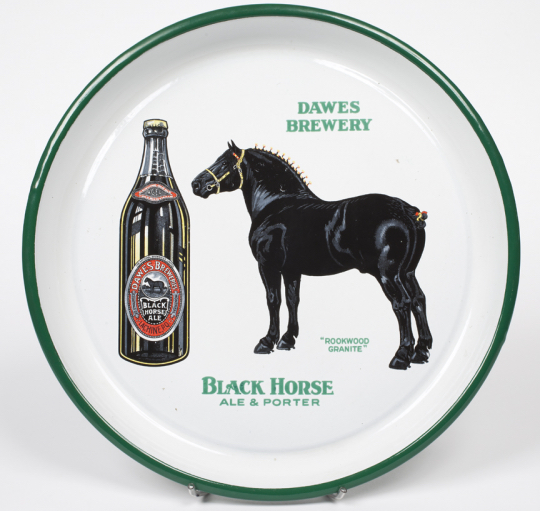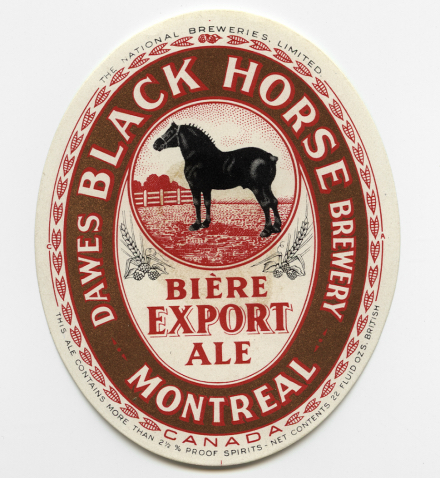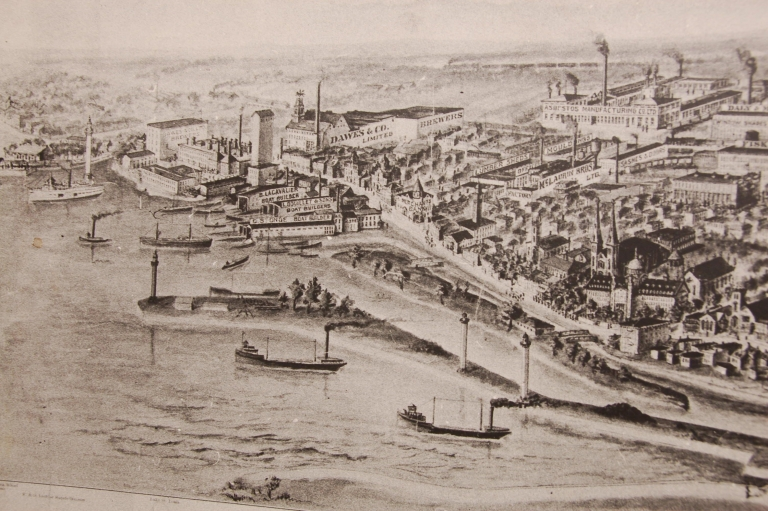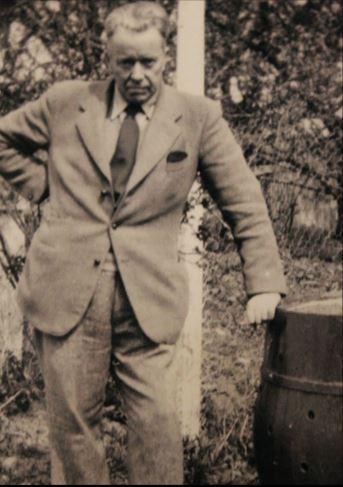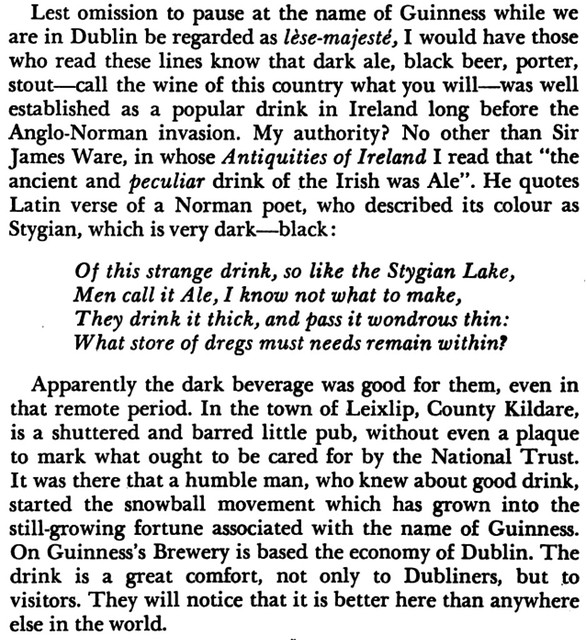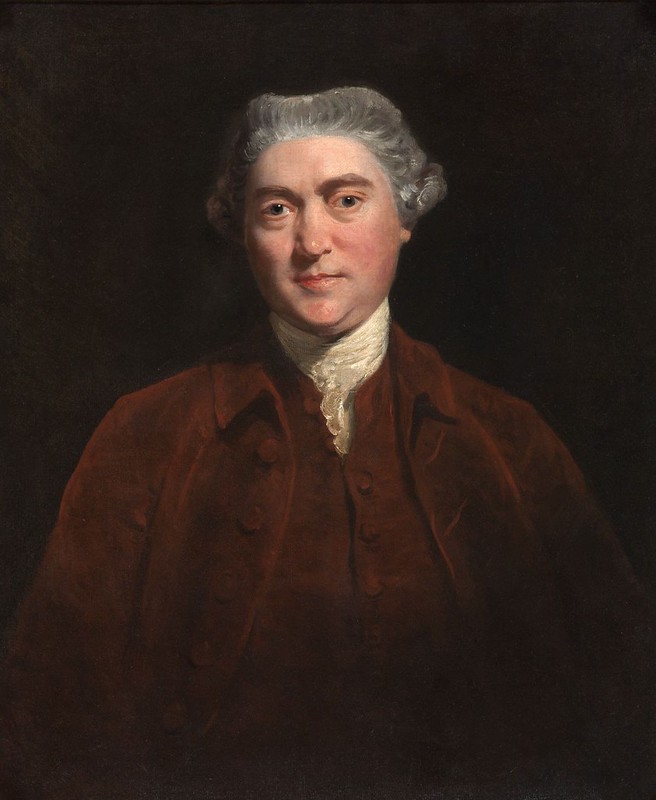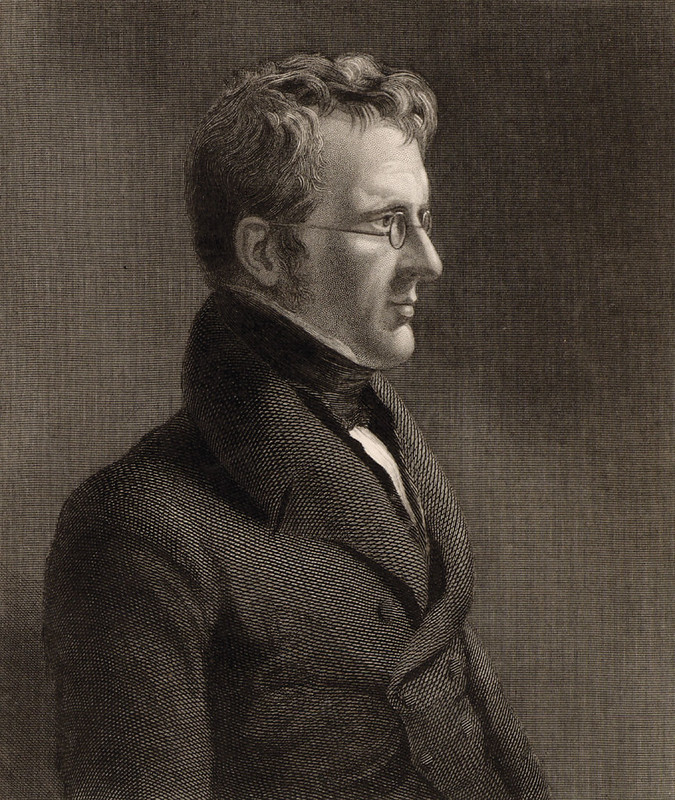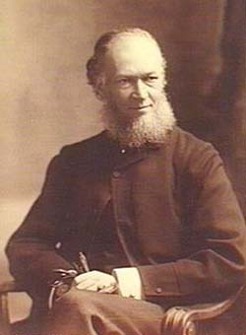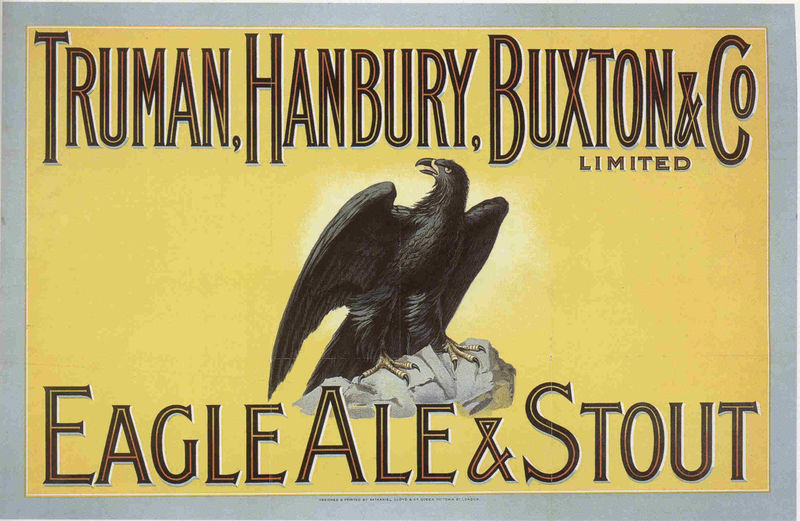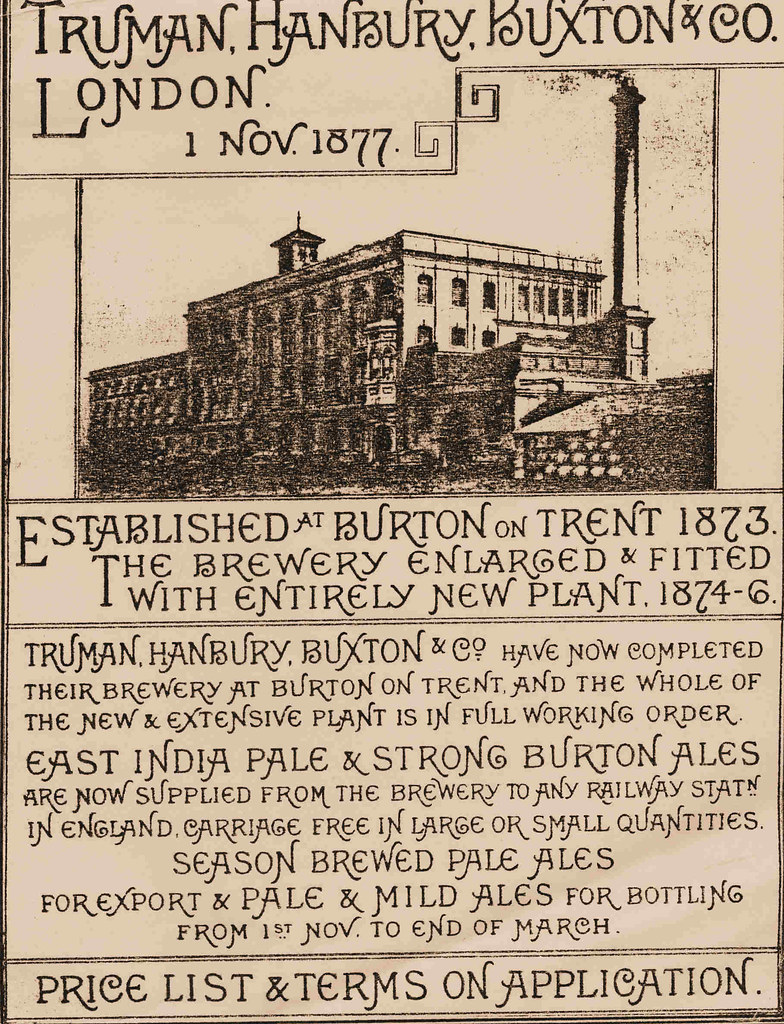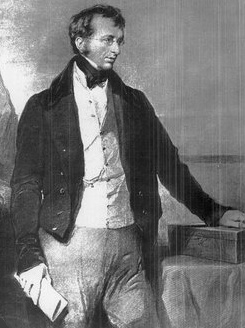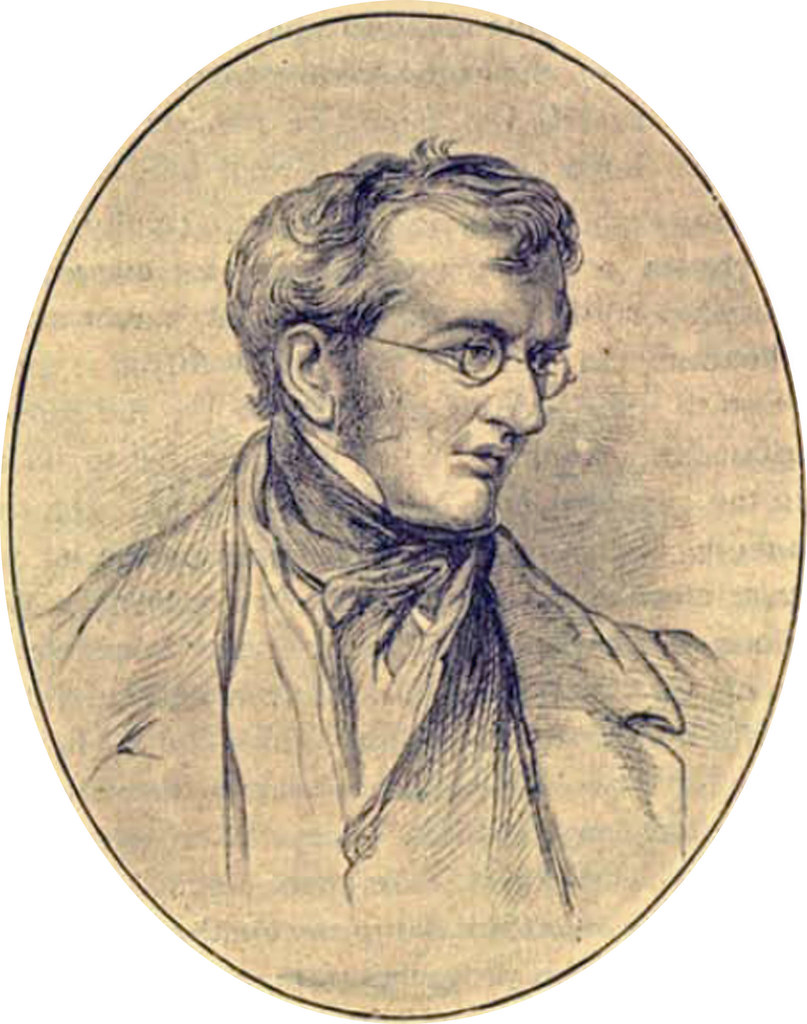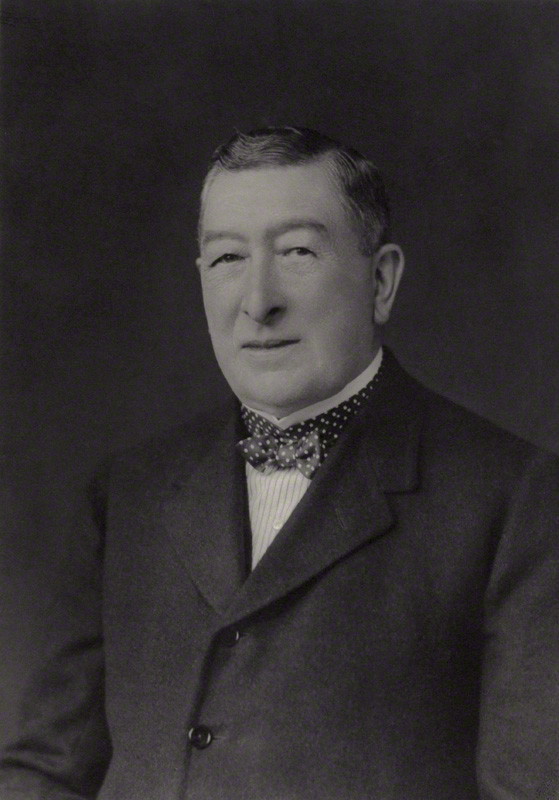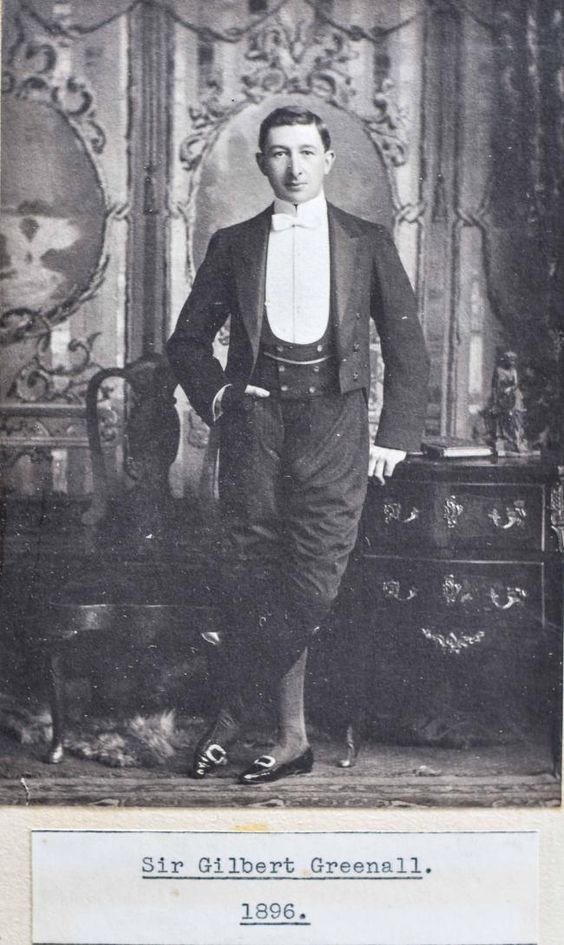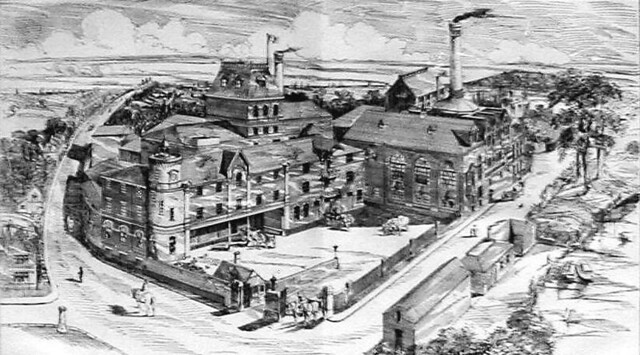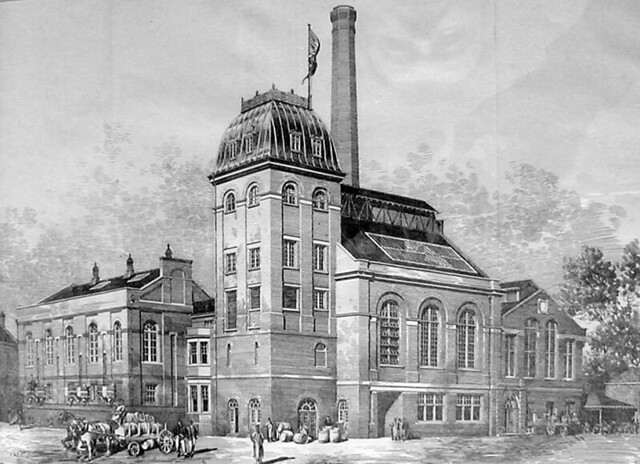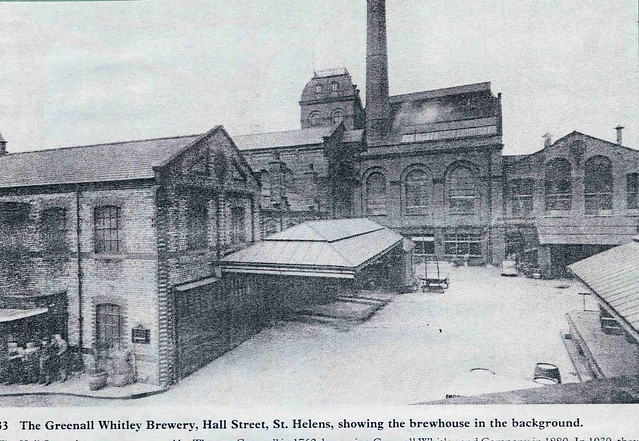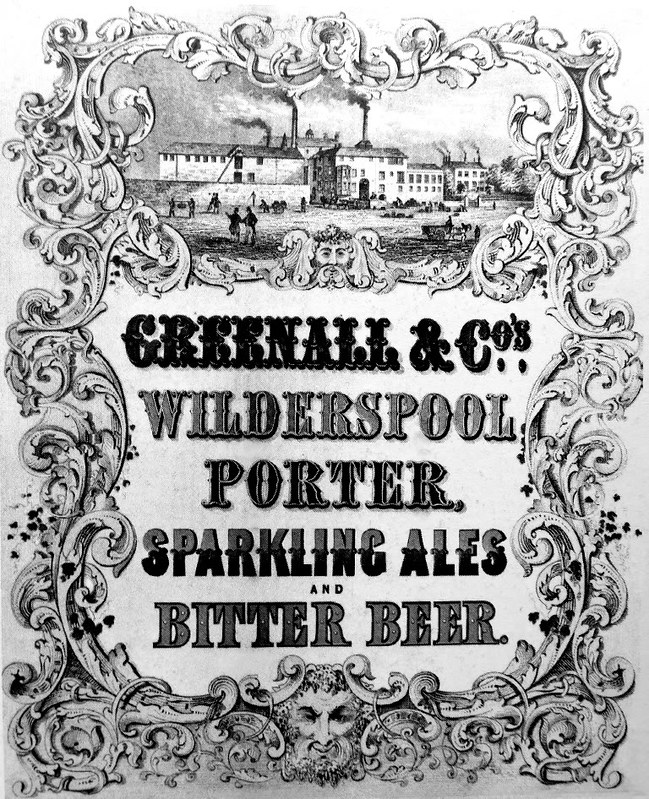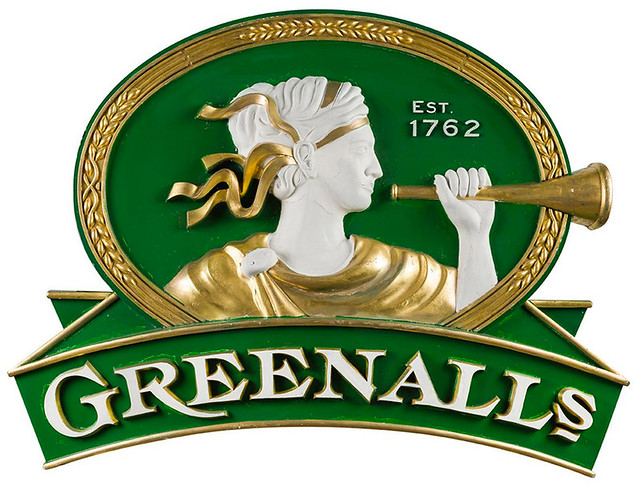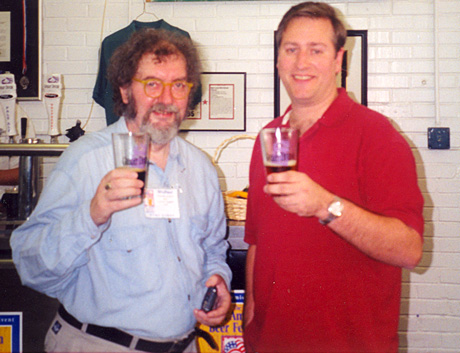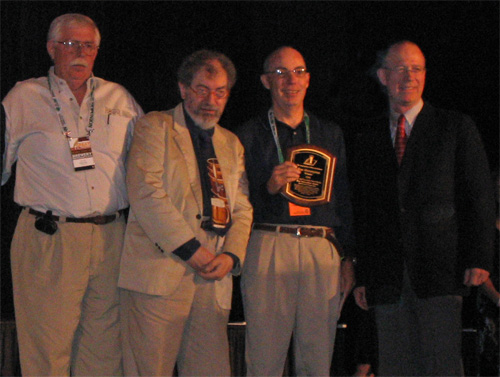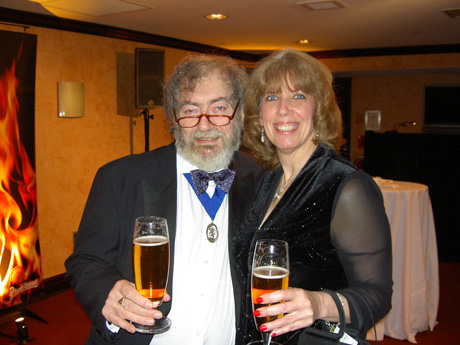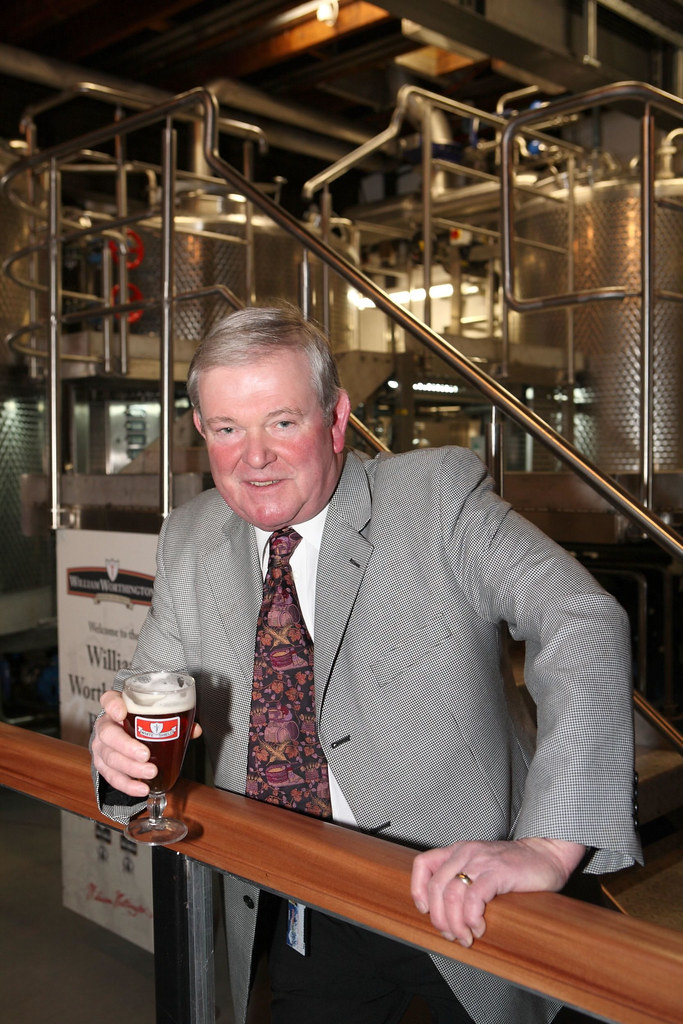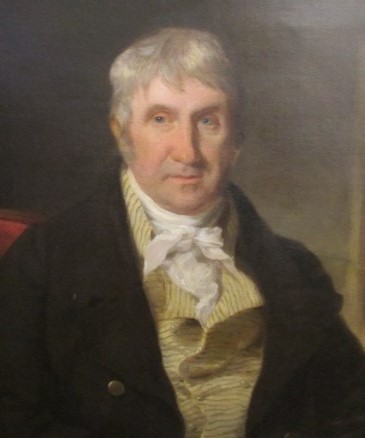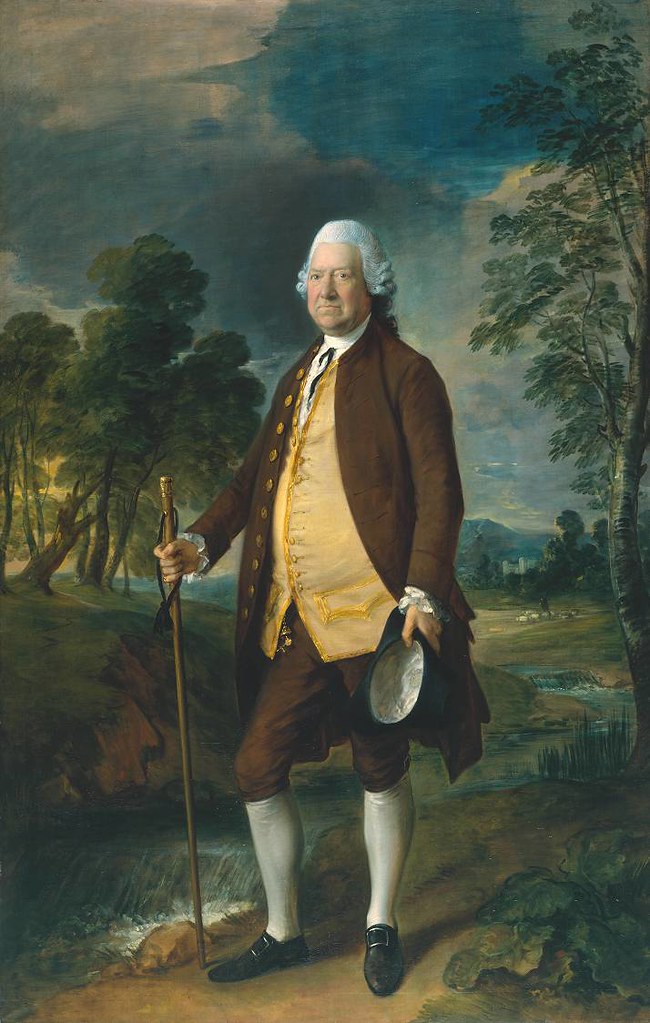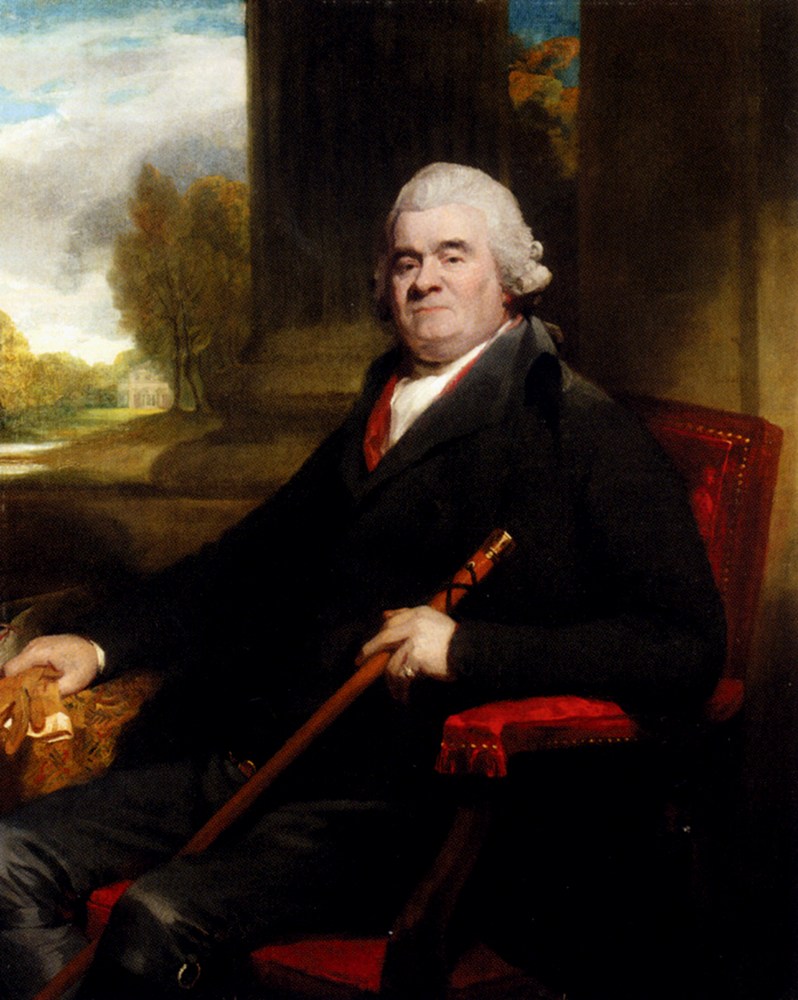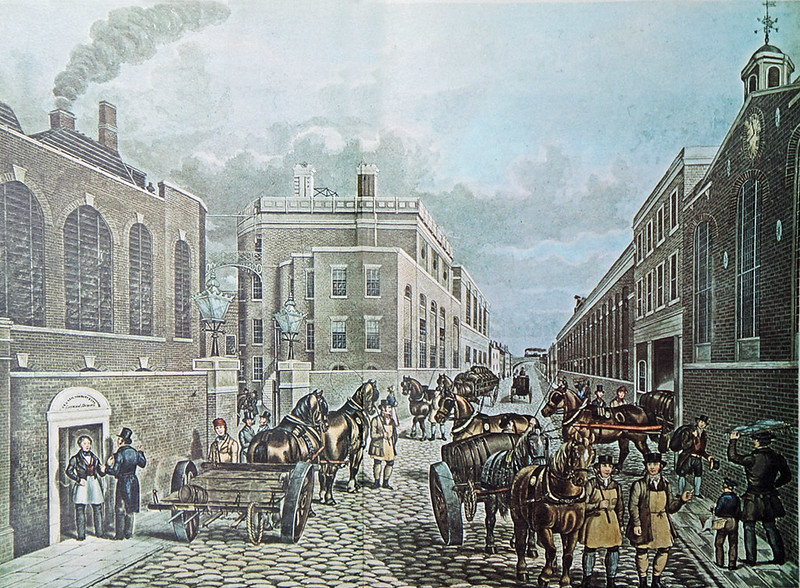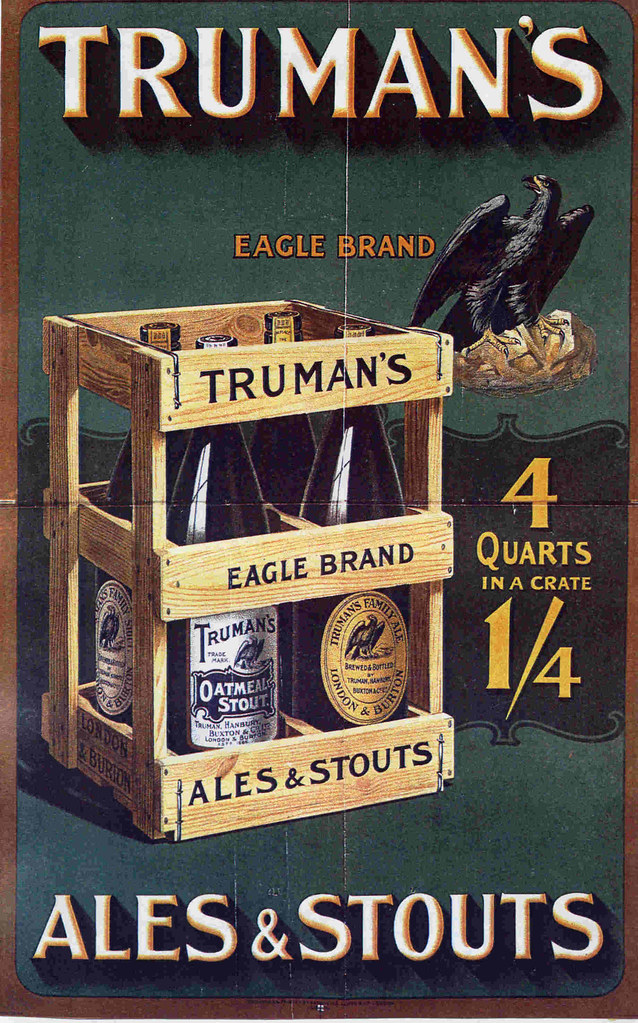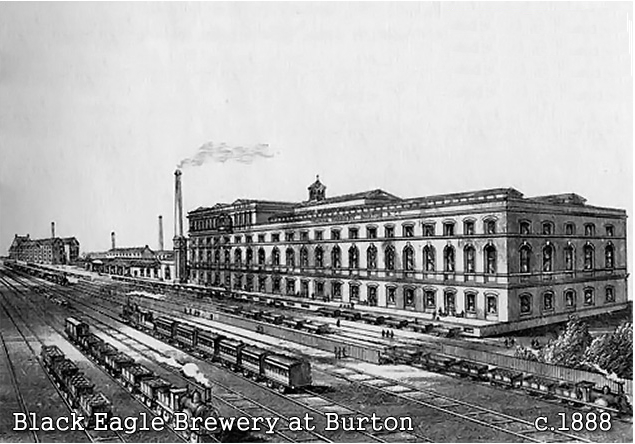
Today is the birthday of Ralph Thrale (1698-April 9, 1758). Thrale’s exact date of birth is not known, but he died today in 1758, so that’s why I’m celebrating his birthday today. He was born in Offley, Hertfordshire, England, the son of Ralph Thrale, a Cottager originally from Sandridge who moved to Offley. His uncle brought him to London around 1711 after his father died (when he was only 13) to work at his Anchor Brewery, in Southwark, in the central part of the city, and eventually he became the Master of The Brewers Company, having bought the brewery after his uncle’s death. He was also a Member of Parliament from 1741-1747 and also High Sheriff for Surrey from 1733-34.
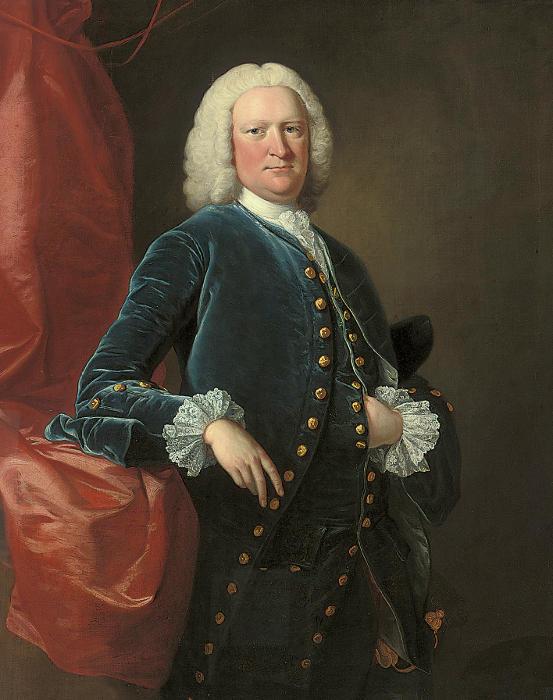
Portrait of Ralph Thrale by Thomas Hudson.
This is his short biography from the History of Parliament:
The son of ‘a hardworking man at Offley’, Thrale was brought to London by his uncle, Edmund Halsey, the owner of the Anchor brewery at Southwark, who ‘said he would make a man of him, and did so but … treated him very roughly’, making him work ‘at six shillings a week for twenty years’. He soon ‘made himself so useful … that the weight of the business fell entirely on him’, and he was expected to succeed to the brewery.1 But he fell out with his uncle by marrying ‘a wench that Halsey wanted to have for his own pleasure’, and was cut off.2On Halsey’s death in 1729, the Anchor brewery was put up for sale. According to Mrs. Piozzi, Thrale’s daughter-in-law,
to find a purchaser for so large a property was a difficult matter, and after some time, it was suggested that it would be advisable to treat with Thrale, a sensible, active, honest man, who had been long employed in the house, and to transfer the whole to him for £30,000, security being taken upon the property. This was accordingly settled. In eleven years Thrale paid the purchase money. He acquired a large fortune. But what was most remarkable was the liberality with which he used his riches.
Returned as an opposition Whig for Southwark, the brewers’ constituency, he voted against the Government on the chairman of the elections committee in 1741 and on the Hanoverians in 1744, was absent from other recorded divisions, did not stand again, and died 8 Apr. 1758.
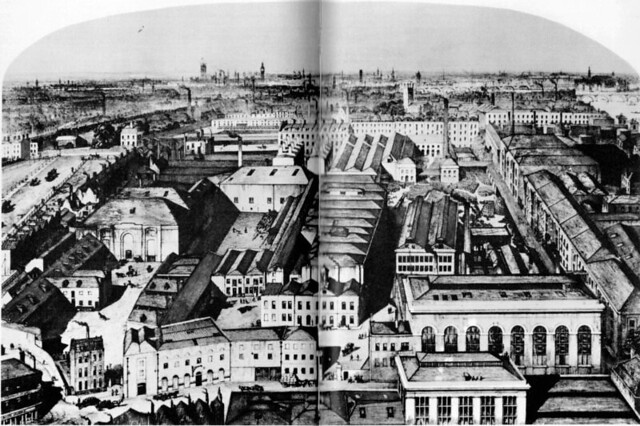
Thrale’s Anchor Brewery around 1785.
This mention of Ralph Thrale’s involvement in the Anchor Brewery is from “A History of Beer and Brewing,” by Ian Spencer Hornsey:
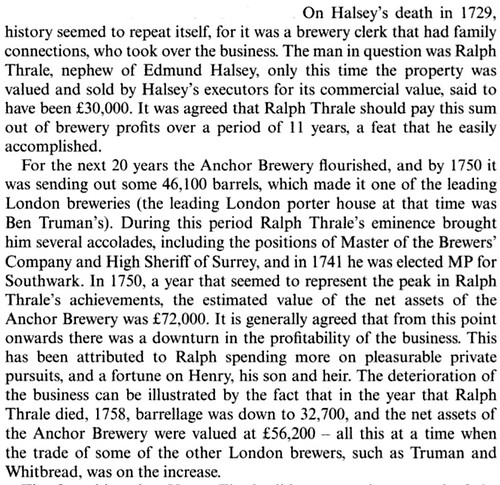
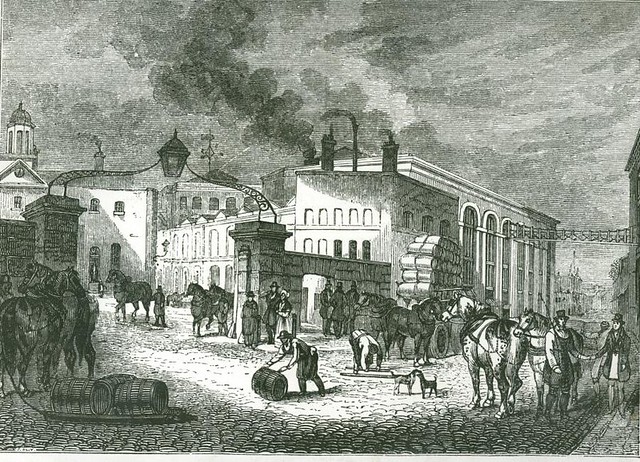
This is the entry for Barclay, Perkins & Co. Ltd, which at one time had been Thrale’s Anchor Brewery, from “The Brewing Industry: A Guide to Historical Records,” edited by Lesley Richmond, Alison Turton, published in 1990:
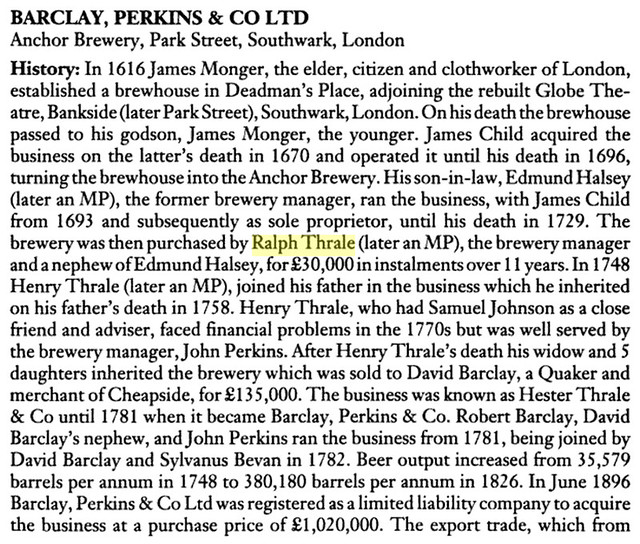
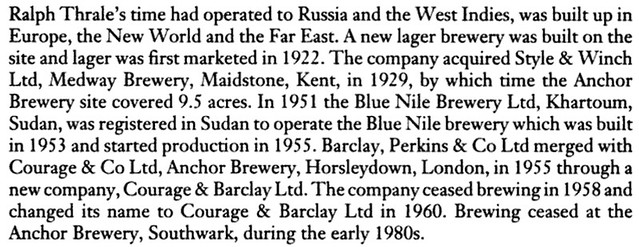
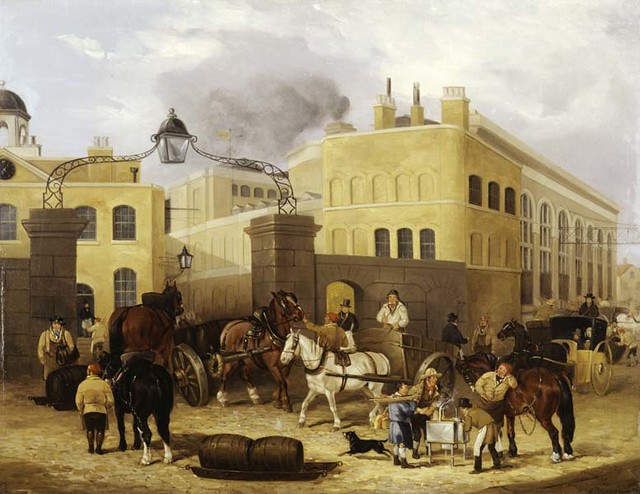
The Anchor Brewery around 1820.
And finally, the famous English writer Charles Dickens, during the period when he was writing many of his major works, “he was also the publisher, editor, and a major contributor to the journals Household Words (1850–1859) and All the Year Round (1858–1870). In “Volume V, from March 30, 1861 to September 21, 1861,” in a piece entitled “Queen of the Blue Stockings,” from April 20, 1861, Ralph Thrale is mentioned in a history of the Barclay Perkins brewery to give context to his tale:
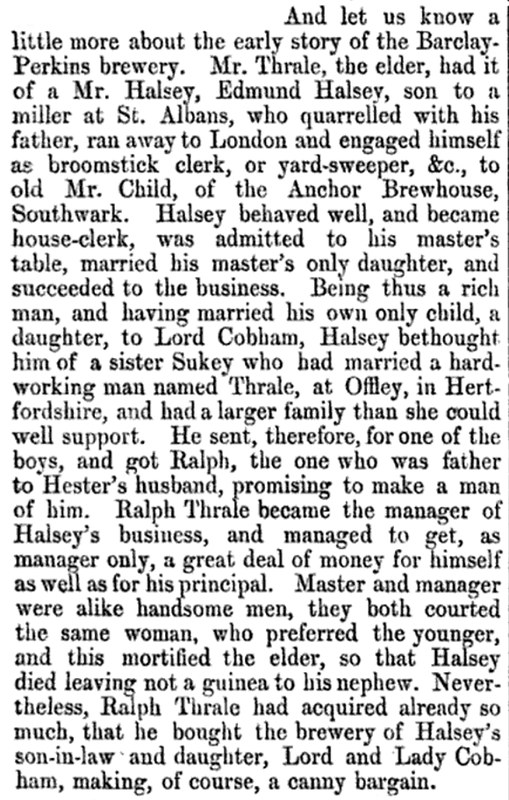
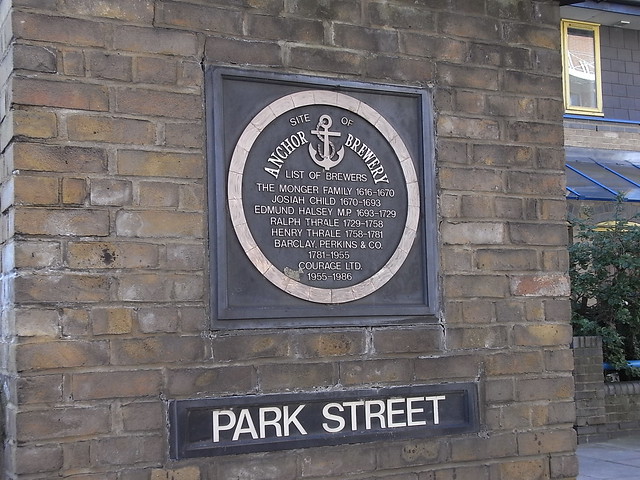
A marker where Thrale’s brewery once stood in central London.






